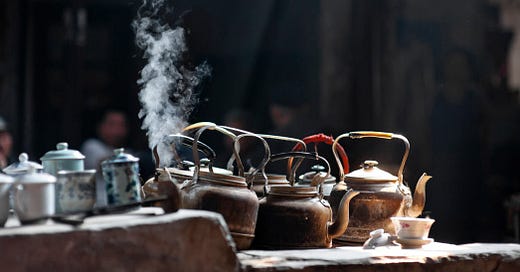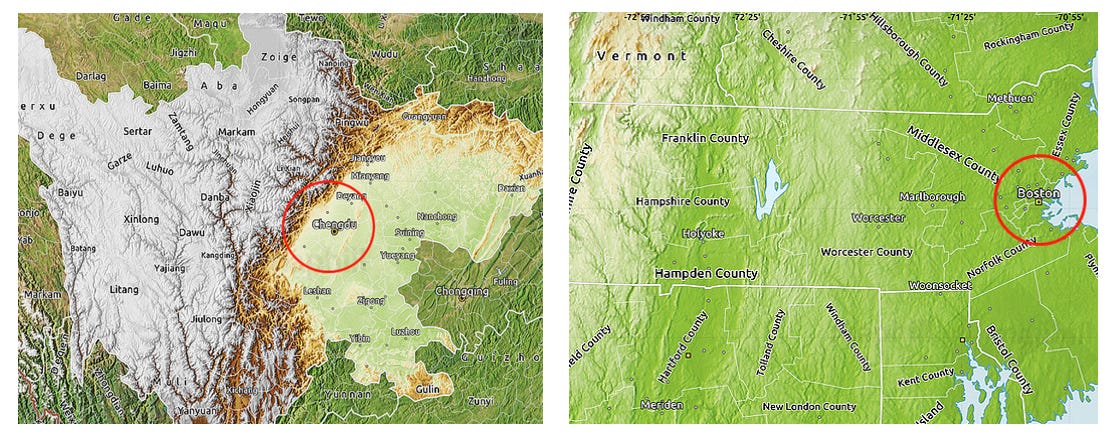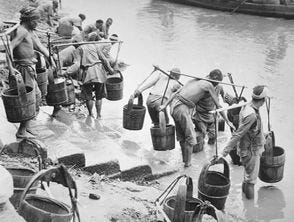The Tea House around the Corner
How the tea house industry gained popularity in Sichuan, China
In this post, we continue our Social Observation Series (#1 Thoughts on China's Stringent Regulations on the Tutoring Industry) with a closer look at tea houses in Sichuan, a province located in southern China.
This may not seem like a particularly noteworthy subject at first glance. But, as with any cultural phenomenon, the popularity of these establishments tells a deeper story about the society in which they exist. In this post, we will delve into the topic of tea houses in Sichuan province and how geography and natural resources have played a crucial role in their development and popularity.
When it comes to Sichuan, a province in southern China, many people immediately think of pandas. But before I visited Sichuan and its capital city, Chengdu, I had no idea that tea houses were so popular there.
When I first visited Sichuan and its capital city Chengdu, I was struck by the sheer number of tea houses that dotted the streets. Even in Beijing, where I lived for over a decade, tea culture is not as deeply ingrained in daily life as it is in Sichuan. In fact, they are a staple of daily life for local residents, much like Starbucks is in many Western countries. The province is also home to China's first tea house.
Tea houses have been a part of Sichuan's culture for centuries. In the early 20th century, based on an estimation at least one out of every four people visited a tea house every day. They were not just places to drink tea, but also served as important social spaces for people to gather, do business, talk about politics and entertainment, and even served as a common setting in Chinese literature. In fact, having a tea house nearby was even considered a key factor when choosing a new home.
I've included a collection of photographs of Sichuan tea houses, both from the past and present, along with an audio recording from a traditional tea house. The audio includes the sounds of people talking, tea being served and drunk, and an opera performance, giving you a more immersive, multi-sensory experience of what it's like to sit in a tea house and enjoy a cup of tea. This will provide a deeper understanding of the atmosphere before we continue with the discussion.
What interested me during my visits to Sichuan is how the tea house industry gained its phenomenal popularity. Of course, there are cultural and institutional factors at play, such as tea drinking culture, tax policy, and union control. But what I want to focus on today is how geography and natural resources have contributed to the development of tea houses in Sichuan. Their importance is often overlooked.
Geography
From a geographical perspective, Sichuan boasts one of the largest basins in China. The province has a diverse range of altitudes, ranging from nearly 7,000 meters in the West to a low-lying East, resulting in a complex terrain that is considered to be the most challenging in China. If you're an avid cyclist, a trip to Sichuan will give you a firsthand experience of this rugged landscape. As a point of reference, the topographical map of Chengdu, Sichuan's capital city, is vastly different from that of Boston.
Before the advent of automobiles and trains, tea houses served as important rest stops for people traversing Sichuan's mountainous terrain. They were a place for people to take a break after a long journey, enjoy a cup of tea, and water their thirsty horses. The tea houses played the role of a courier station, providing essential services to travelers on the road.
Drinking water
In the past, there were two primary sources of water: well water and river water. For example, in Chengdu, while there were thousands of wells, the high alkaline level of well water made it unpalatable for drinking, leaving residents to rely on river water transported from miles away outside of the city.
Residents had the option to purchase fresh water from water carriers who delivered it door-to-door, or from tea houses, which typically already had the water boiled for convenience. Given the large water consumption of a tea house, river water was usually transported in large wooden barrels directly to the tea house. This not only provided a price advantage due to the wholesale vs retail purchasing, but also a perception of higher water quality because of the long-standing tea drinking culture.
Energy
The availability of water also brought with it the need for energy, primarily used for boiling water and cooking. In households, firewood was only burned during lunch and dinner, as it was relatively expensive for residents.
On the other hand, tea houses offered boiled water at an affordable price (around 2 pence per pot) at all times. Additionally, they provided value-added services such as inexpensive heating services, like brewing medicines and stewing meat, effectively acting as a public central kitchen for local residents.
Tea houses in Sichuan province were more than just a place to sip on a warm cup of tea and catch up with friends. Beneath the surface, they played a vital role in the daily lives of local residents and travellers, serving as a hub for social interaction, commerce and even as a source of clean drinking water and central kitchen.
However, with the advancements in modern society and infrastructure, these historic tea houses are gradually disappearing. But if you ever have the opportunity to visit Sichuan, make sure to visit one of these tea houses, and take a step back in time to experience the rich culture and daily life of the past. Imagine yourself sitting amongst the locals, listening to the sound of opera in the background, feeling the warmth of the tea, and getting a glimpse of how these tea houses played a role in shaping the society.
Thanks for your reading and I hope you enjoy it. Stay safe and see you next time.









This was very enlightening, thank you for sharing